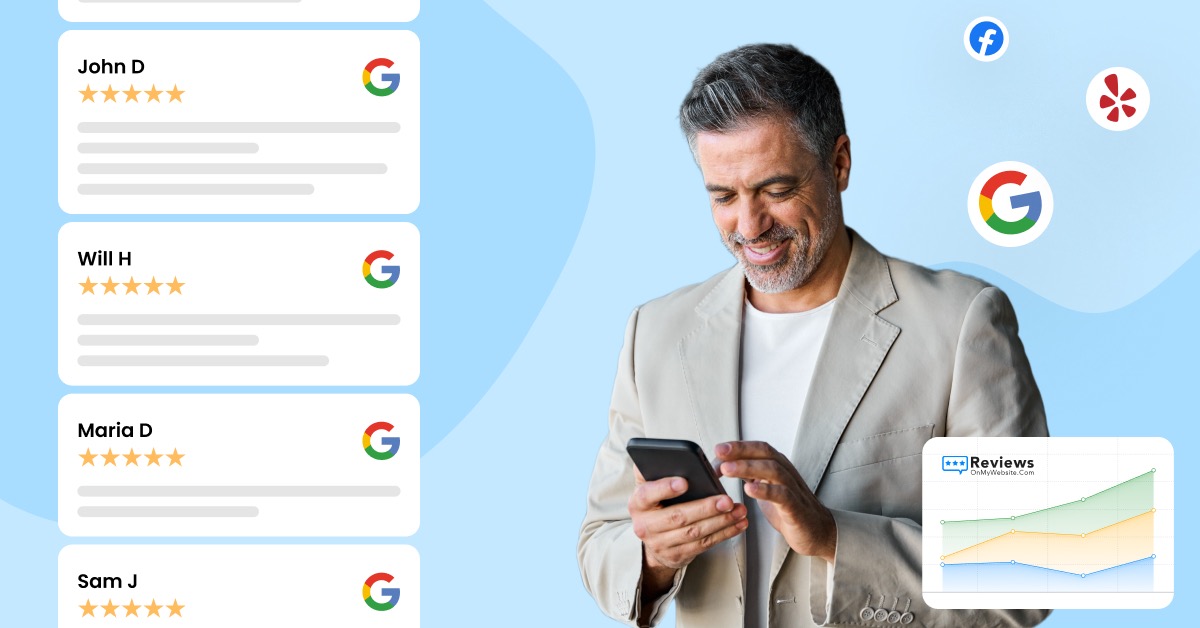Growing a small business on a tight budget requires a smart, well-thought-out plan.
In this guide, we’ll show you how to create and implement an effective small business marketing strategy.
What Is Small Business Marketing?
Small business marketing is the process of promoting a business’s products or services in order to generate new customers or retain existing ones.
It often includes a mix of digital marketing tactics (such as search engine optimization and social media marketing) and local marketing tactics (such as events or partnerships).
Why Marketing Is Essential for Small Businesses
Most small businesses have a healthy level of competition. Marketing can help a small business stand out and show customers why it’s a good fit for their needs.
A smart marketing strategy allows you to improve brand awareness and discovery, build credibility, and drive new customers to your business.
It also gives you an opportunity to actively work on generating more revenue instead of hoping for referrals or relying on walk-in customers.
How to Build a Small Business Marketing Strategy
The key to building an effective small business marketing strategy lies in knowing your target audience, defining your unique selling proposition, setting clear goals, and choosing the right marketing channels.
Know Your Target Audience
It’s a mistake to try to sell and market to everyone. You can’t possibly cater to everyone’s needs or be the best choice for every consumer out there. And you should try to.
Instead, try to define your ideal customer. Think about the following:
- Demographics: How old are they? Where are they located? What’s their income level?
- Pain points: What problems do they need solved?
- Behavior: What are their interests? How do they choose or pay for products or services like yours?
Once you’re clear on the above, you can create a simple buyer persona:
“Our ideal customer is a 35-year-old mom looking for affordable, healthy meals on the go.”
This will then help you craft messaging that resonates better with your target customers and allow you to create more effective marketing campaigns.
Define Your Unique Selling Proposition (USP) and Brand Messaging
Your unique selling proposition is what differentiates you from your competition. And shows potential customers where you’re a better fit to solve their needs.
A good unique selling proposition:
- Focuses on benefits
- Highlights your business’s strengths and differentiators
- Reflects your brand’s values
You should also be able to sum up your unique selling proposition in a single, clear sentence. Like this:
“We make your home sparkle—without harsh chemicals or long appointment windows.”
Set Clear Goals and Budget
Every marketing strategy needs goals.
Think about what you’re trying to accomplish through your marketing efforts. Make sure to be specific.
Here are a few examples:
- “Increase website traffic by 25% in the next 3 months by publishing two new blog posts per month and improving keyword rankings.”
- “Book 30 new appointments per month through Google Local Services Ads, with a cost-per-lead under $50.”
- “Generate $10,000 in new customer revenue over the next 60 days through a limited-time offer promoted via email and social media.”
Next, set a marketing budget. A good rule of thumb is to dedicate 5-10% of your revenue to marketing. If you’re looking to grow aggressively, you should aim for the top of this range.
Choose the Right Marketing Channels
As a small business, you can’t (and shouldn’t) be everywhere. You just need to be where your audience is.
Start by choosing 2-3 channels where your target customers spend time the most. And then readjust if needed.
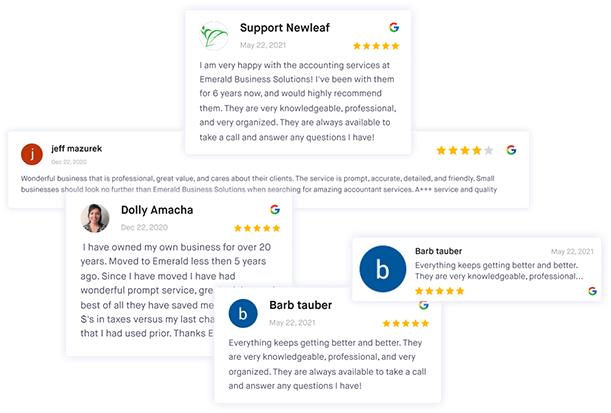
Manage your business's reviews with ReviewsOnMyWebsite
Get more 5-star reviews and take control of your online reputation with ReviewsOnMyWebsite.
4. Digital Marketing Tactics That Work
Search Engine Optimization (SEO)
SEO helps increase your site’s chances of appearing in search engine results when people search for a business like yours.
To get started with SEO, use tools like Semrush or Ahrefs to discover the most relevant keywords for your business. Then, optimize your site for those keywords by including them across key pages, page titles, and headings.
Your Google Business Profile (GBP) also plays a part in how Google ranks your business for local searches.
Make sure to claim your GBP and fill out all the available fields to provide users and Google as much information about your business as possible. This will help Google understand that your business is relevant for specific searches.
You should also add your business to general business directories like Yelp, as well as any industry-specific ones. And use consistent NAP (Name, Address, Phone number) information across all your business listings.
Social Media Marketing
Posting regularly on social media can help you develop rapport with your target audience and keep your business top-of-mind. Choose 1-2 platforms where your target customers are most active on and start posting content regularly.
Here are a few types of content you can get started with:
- Behind-the-scenes photos
- Customer stories or reviews
- Helpful tips or educational content
- Even announcements
You can use tools like Buffer and Later to schedule posts weeks or months in advance.
Allen Kou, the owner of Zinfandel Grille, used social media to drive more people to his restaurant:
"We started posting weekly specials on social media and it really helped our restaurant. People could see what was new each week, which brought back regular customers wanting to try different dishes.
It worked way better than just having a static menu online because people kept checking back.
If you run a small business, staying in touch with customers regularly like this can make a big difference."
Email Marketing
Email marketing is one of the most cost-effective digital marketing channels for small businesses.
You can use it to stay in touch with existing and past customers through regular weekly or monthly newsletters.
Or set up automated sequences to nurture leads into becoming customers.
Platforms like Mailchimp and ActiveCampaign can help you manage your email list, send email campaigns, and track performance.
Josiah Lipsmeyer, the founder of Plasthetix, explains how sending personalized emails helped drive more clients for a plastic surgery practice:
"Instead of sending everyone the same marketing emails, we created different streams based on surgery type and age. It took some adjusting, but now it works well.
More people started replying, and they showed up to consultations with better questions. My advice is to let your data guide the conversation. It makes your emails feel thoughtful, not like a generic blast."
Content Marketing
Another way to reach your target customers is to create and publish helpful content that positions your business as a trustworthy expert.
For example, you could write blog posts about topics relevant to your target audience.
Or create videos that answer common questions your customers have.
Justin Carpenter, the founder of Jacksonville Maids, used short videos to drive more clients for his cleaning business:
"We started posting short videos of our staff on TikTok and LinkedIn, just showing their training and daily routines. We suddenly got applicants who'd seen the posts.
Our current clients loved it too, saying it made the service feel more personal when they recognized the faces.
So, celebrate your team publicly. It helps with hiring and keeps customers around because they feel like they know you."
PPC Ads
If you have the budget for it, you should also consider PPC advertising through platforms like Google Ads.
PPC ads can be a quick way to generate more customers for your business. But, they can be very expensive.
And you might also waste your budget if you don’t know what you’re doing.
As a general best practice, start by targeting high-intent terms people use when searching for a business like yours (e.g., “emergency plumber near me).
Set a daily ad budget you’re comfortable with and keep an eye on ad spend to avoid wasting money on unprofitable keywords.
Online reputation management for small businesses
The vast majority of consumers check online reviews before deciding to buy from a business. This makes it crucial that you actively manage your business’s online reputation.
This includes replying to customer reviews regularly, generating new reviews consistently, and showcasing your top reviews.
Replying to reviews
You should respond to all the reviews your business gets, regardless of sentiment. And be quick about it—most consumers expect businesses to respond to reviews within 3 days.
You can monitor the web for reviews of your business with ReviewsOnMyWebsite. The platform will notify you as soon as your business receives a new review.
You can also read and reply to all the reviews from the software’s review feed.
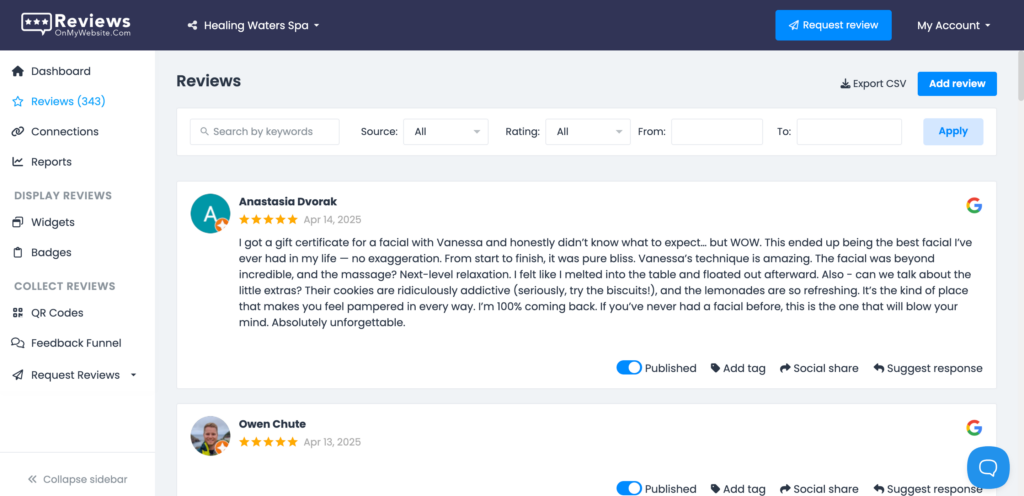
When it comes to positive reviews, remember to thank the customer for their business and the review. And invite them to use your business’s products or services again.
Here’s an example:
"Thank you for taking the time to leave a review! We’re glad we could resolve the issue promptly. Don’t hesitate to call us next time you need help—we’re always here for you."
As for negative reviews, you should address these as soon as possible. Here, you’ll want to be careful not to anger the customer further.
Acknowledge the issue and their frustration. And offer to make things right. Ideally, invite them to discuss the matter in private.
For example:
“We’re sorry to hear this, and we appreciate you bringing it to our attention. Your time and trust are important to us, and we’d like to resolve this as soon as possible.
Please contact us at [phone/email] so we can follow up and ensure the problem is taken care of.”
Generating reviews
Most customers read 4-10 reviews before trusting a business. And the majority only buy from businesses with a rating of 4 stars or more.
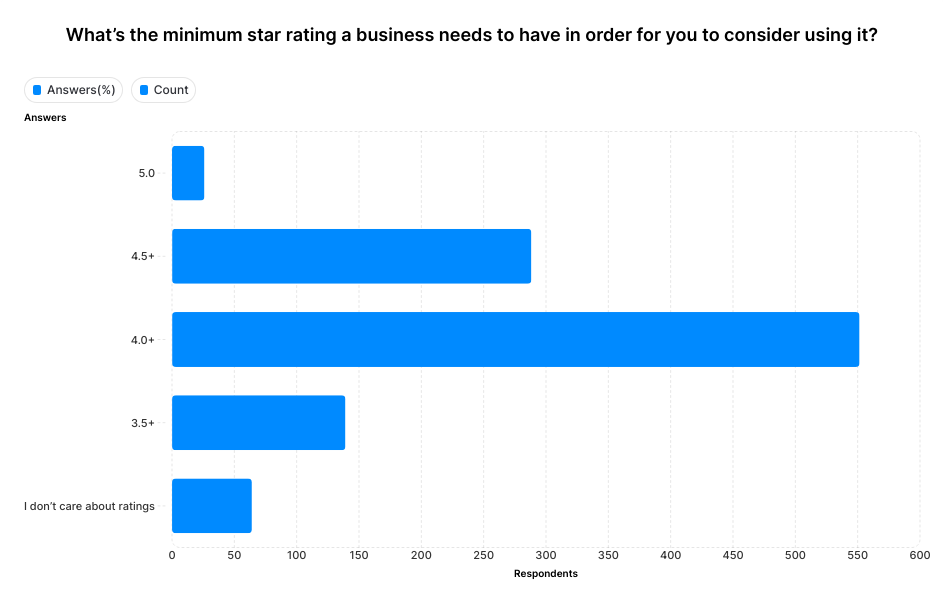
It’s important that you consistently work on getting new reviews for your business. And focus on providing a great customer experience so that all your reviews have a rating of 4 stars or more.
Most happy customers are glad to leave a review, you just need to ask. And the best time to do it is right after a positive interaction.
Apart from asking for reviews in person, you can also use a tool like ReviewsOnMyWebsite to set up automated email and SMS review request campaigns. This will ensure all your customers get reminded about leaving a review for your business.

Manage your business's reviews with ReviewsOnMyWebsite
Get more 5-star reviews and take control of your online reputation with ReviewsOnMyWebsite.
Showcasing reviews
Once you’ve generated positive reviews for your business, don’t let them sit idle.
You can use ReviewsOnMyWebsite’s review widget to display reviews on your site with ease.
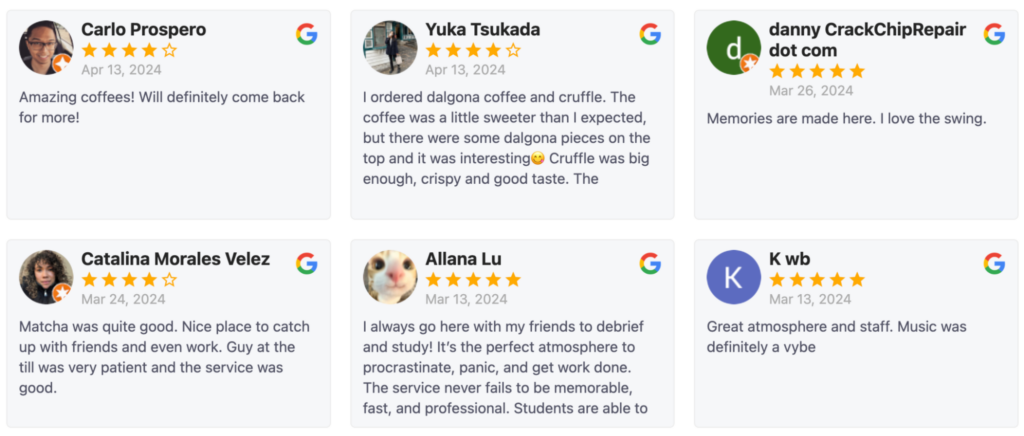
The widget can also be customized to fit your website’s look and feel.
ReviewsOnMyWebsite also comes with a social sharing feature you can use to turn your reviews into engaging social media posts.
5. Offline & Community-Based Marketing Ideas
While every small business should be using digital marketing to grow, it would be a mistake to ignore offline tactics.
Offline marketing tactics can help you improve brand recognition locally, build stronger customer relationships, and drive more customers via word-of-mouth.
Here are a few offline tactics you can try:
- Sponsor local events: You can get more people to learn about your business by sponsoring local events and causes, such as fundraisers, sports teams, or festivals. This could get your business’s name on banners, uniforms, local press releases, and more.
- Host your own events: There’s also the option to host your own events, such as classes, workshops, promotions, or giveaways. This can be a great way to gather your target customers in a single place and get more people to find out about your brand.
- Use printed marketing materials: Design memorable marketing materials like flyers, brochures, or coupons. Place them inside shopping bags, in local newspapers or mailers, or at partner businesses (e.g., coffee shops, gyms, etc.)
- Build partnerships with other businesses: Look for other businesses in your area that have an overlapping audience. Collaborate on cross-promotions to get each other’s businesses in front of more people.
Small Business Marketing Mistakes to Avoid
Increase your chances for success by avoiding these small business marketing mistakes:
- Trying to market to everyone: If you attempt to appeal to everyone, you’ll end up resonating with no one. Avoid generic messaging and focus on crafting messaging that speaks directly to your target customers’ goals and pain points.
- Using inconsistent branding or messaging: Having inconsistent branding or messaging across your website, social media channels, email marketing campaigns, or printed marketing materials can cause confusion and reduce trust.
- Neglecting existing customers: While acquiring new customers is important, you shouldn’t ignore the value of your existing customer base. Since loyal customers are more likely to buy from you again, you should dedicate some time every quarter to creating marketing campaigns that target existing customers.
- Focusing on vanity metrics: Instead of tracking vanity metrics like social media follower counts, focus on those that drive real business impact, such as website conversion rate, cost per lead, and customer lifetime value.
- Not tracking performance: You need to track and measure your marketing performance so that you know what’s working (and what isn’t). You can use tools like Google Analytics and Google Search Console to track your website’s search performance.
Frequently asked questions about small business marketing
What is the best way to market a small business on a tight budget?
If you’re on a tight budget, the best way to market a small business is to focus on free or low-cost tactics like optimizing your website and Google Business Profile, collecting customer emails and sending regular email promotions, and posting on social media.
Starting a referral program and building partnerships with local businesses are also good tactics to try on a small budget.
How do I know which marketing channels are right for my business?
The right marketing channels for your business are those where you have a high chance of reaching your target customers. For example, if your target market are young adults, Instagram and TikTok would be good channels to try.
Start with 2-3 channels, see what works, and then double down on it.
Do I need a website to market my small business?
Yes, you do. This will allow you to build trust more easily and appear in search engine results for relevant searches.
Even a simple website with a handful of pages can improve your business’s visibility and credibility significantly.
How long does it take for marketing to work?
It depends on the tactic. Tactics like PPC advertising can generate results within days.
Others, like SEO and content marketing, can take months or even years.
For optimal growth, you’ll want to use a mix of short-term and long-term tactics.
What marketing tasks can I automate?
You can automate a variety of marketing tasks, including social media posts, email sequences, and review requests.
Tools like Buffer, Mailchimp, and ReviewsOnMyWebsite can help you save time without sacrificing quality.
Conclusion
If you own or manage a small business, you don’t need a huge budget to grow. You just need to create a smart marketing strategy and execute consistently.
Start by understanding your audience. Then, choose a few high-impact tactics, measure your results, and adjust as you go along.
While you’re here, make sure to also check out our list of the top small business marketing tools.



